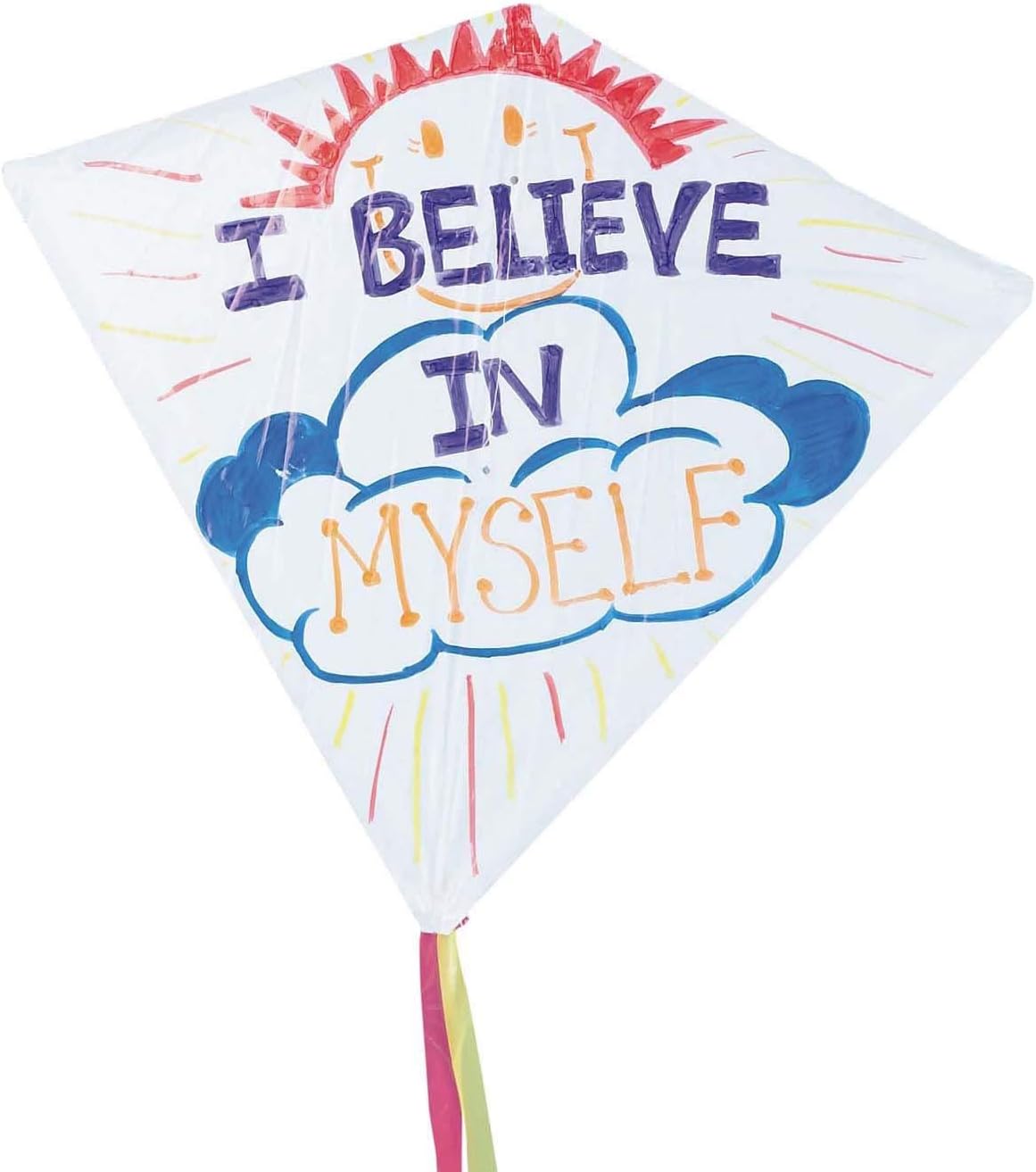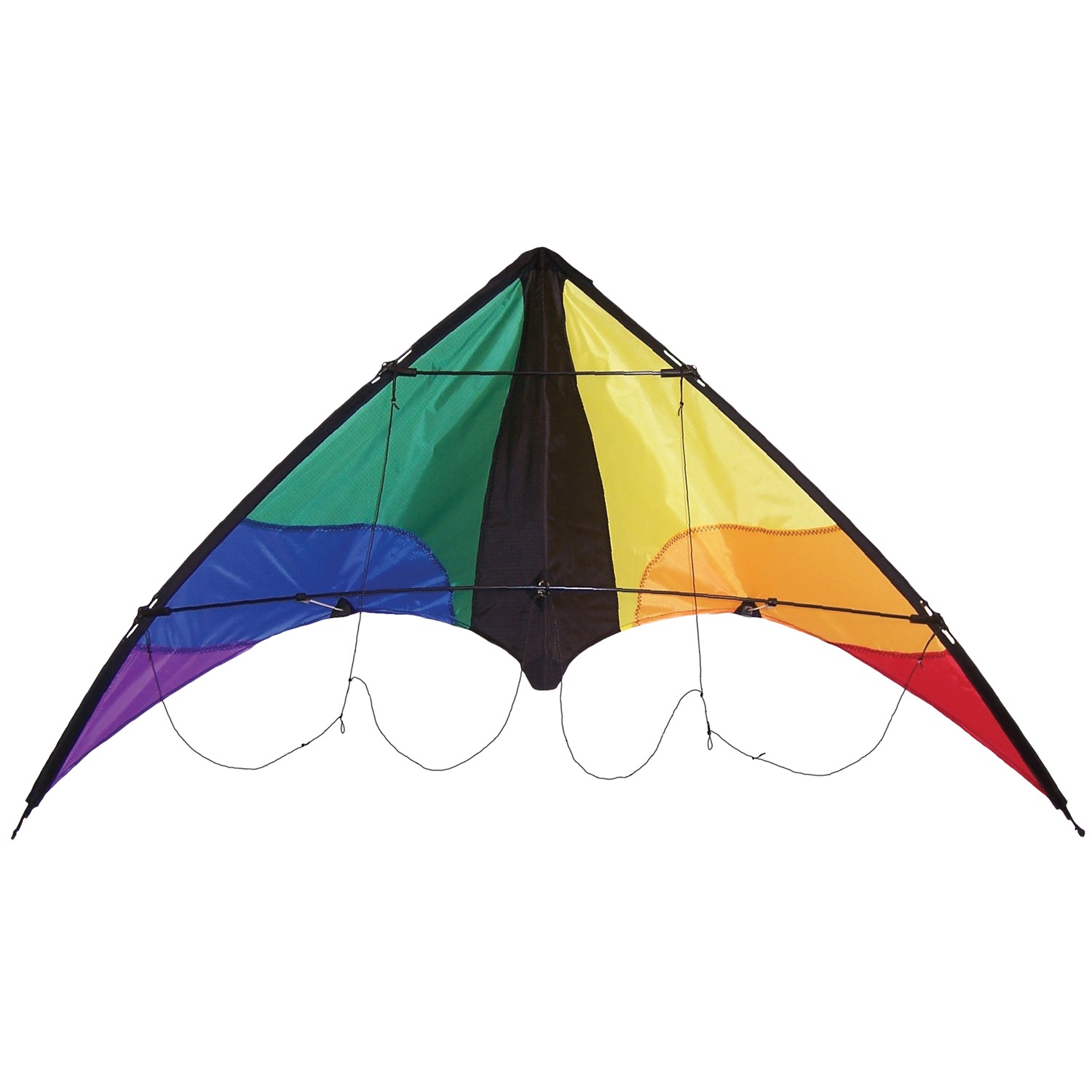How to be an Amateur Kite Flyer, like a Pro
Published 2021-6-20Before this month the most expensive kite I ever had was probably about $5.99.
Most of them I probably could have gotten for $1 if I had gone to the dollar store instead of the grocery store.
They've all been garbage.
(in fact the one pictured is better than the ones I'd flown because at least it has
streamers)
How to Fly a Kite
- Get a good kite, not a bad one (see below)
- Fly on a day where the tops of the trees sway a bit with the wind (as little as 3mph will do)
- RUN the kite to get it up past the trees (and any buildings that might be causing the wind to break in different directions)
Enjoy!
I mean, it does take some figuring out, and having a wind sock (or carefully watching your kite's tail) really helps - as the wind often changes directions by up to 90˚ pretty quickly - but with an easy-to-fly kite and about a city block of stamina, you can do this!
Once it's up you can pretty much just hold it in your hand for... an hour. You may occasionally need to tighten the string (by rapidly pulling it to the ground or reeling it in) if the wind changes directions too quickly, or entirely drops to stillness for more than a few seconds, and then let the string back out a bit at a time when you get tension - but other than that, a decent kite will fly itself even in barely perceptible wind - if you have enough ground wind to launch it, or enough stamina to run it up, that is.
Things to look for in a Kite
Here's what's important:
- About 5ft (or less)
- Sewn "Rip-Stop" Nylon or Polyester - NOT plastic (duh)
- Resin Rods - NOT fiberglass or plastic
- Streamers (tail) - yes, they're functional
- Metal Grommet (eyelet) - for swivel snap lock (fishing-pin) attachment
- Darcon 120lb string (extra) - see reasons below
- Kite Reel - maybe, maybe not
In short, you'll want to start with one of these 3:
- $30 5ft Best Delta Kite by StuffKidsLove
(easiest) - this is what I got for myself
- Rip-stop nylon with resin rods + extra rods and tail + Sea'n'Tree Guarantee (free replacement if damaged or lost)
- $14 - $18 5ft Holiday Delta Kite by emma kites
- Rip-stop polyester with resin rods
- Single-Color ($14) and Multi-Color ($18) options
- $18 3.5ft Watermelon Beach Kite by DA Premium Supply
(fun)
- Rip-stop polyester with resin rods
Searching "kite rip-stop resin" on Amazon will give both good and bad results, so be sure to check the description. Resin is a must. Rip-stop is a must.
$30, Really?
The (aptly named) "Best Delta Kite" costs $30, almost twice as much as the other two I recommended.
It's only one that's nylon, which is better for stretching, and appears to be coated to make it more weather- and water-resistant.
From everything I could tell it is the best kite for beginners (meaning the easiest kite to fly of the bunch).
If I had understood all of what makes a great kite great before, I may have gone for the watermelon instead, but I'm happy with my purchase. 😎 🪁
(that said, I may go for the 5ft-er next because bigger looks more impressive... or maybe still the watermelon, because it's unique 🤪)
Why 5ft?
Supposedly it's easier to fly a smaller kite in less favorable wind conditions. I don't have enough experience to say, but I've seen that noted as I was searching around, and it seems reasonable.
If that's true, the Watermelon may go up even easier that the "Best" kite, but you probably don't want one of the 10ft hawks or flying squids to start.
Why Rip-Stop?
You want fabric that will last snags and tumbles, and that will weather the weather. If it's not rip-stop, don't buy it!
Neither poylester nor nylon is "better", the just have different trade offs.
- Nylon stretches better in gusts, may become heavier in humidity.
- Polyester holds it's shape better, resists water more.
See also:
Why Resin?
Resin bends whereas plastic and fiberglass break. In particular, handling fiberglass (at all) gives you the worst splinters - because you can't see them, but they last for days and days.
With rip-stop + resin you can forcefully pull your kite out of a tree - HARD - without ripping or breaking it.
This is simply a matter of "don't step over dollars to pick up pennies".
If you manage to "save" a dollar or two by getting a kite with fiberglass rods, you're
actually throwing away the value of your money that you could have kept.
Why Streamers?
You should have clip-on streamers. NOT permanently attached! The tail will help your kite keep tension in the sky as the wind changes direction.
It makes the kite more stable. Don't forget it.
You want these detachable because they'll tangle in trees and possibly rip so you want them to be easy to replace (and most of the nicer kites come with an extra tail in the bag).
Why Metal Grommets?
You want to be able to easily hook and unhook your kite. This turns out to be really handy for keeping the string from knotting up as you wind it back in - just unhook it first, and wind up the string from a distance.
Why Darcon String?
Your options are:
- $16 120lb Darcon Kite Line by emma kites
- $15 100lb 300m Spectra, Dyneema, & Coramid
- Waxed Thread & Nylon
- Kevlar
(most of these are also fishing line, you may have noticed)
Darcon is the nice middle ground. It's highly-rated (ex 120lb) for gusty wind and big kites, but it will snap - before strangling someone, for example. If you're going to fly 100m+ (300ft+), in anything but light wind, or with any kites bigger than these, you want Darcon.
Why not Kevlar? We all know that Kevlar is the strongest - but DO NOT get it. It can be dangerous! Imagine kids getting a loop around their neck and then a big gust of wind or a bike going by and snagging on it, or just getting into it around the house. Kevlar line is for professionals that know how to handle it. Not for amateurs.
Why not Waxed Thread / Nylon?. Actually, If you're only going to fly up to the 50m in light wind, the string that comes with your kite (probably one of these two) is probably just fine.
Why not Dyneema / Spectra / Coramid? Why not indeed. If you're going pro with big kites and doing fancy stuff, or find a good deal then, yeah, do it! Be warned though: Dyneema can easily cut your hands, and some of them may not be as stretchy and forgiving.
See also:
Why a Kite Line Reel?

To prevent tangles and make it easier to handle more line. Again, if you're sticking to the 50m string that comes with your kite, no biggie.
Here's what's important:
- Diameter
- How big are your hands? (adults need 8.5"+)
- How much line do you need?
- Material
- Ceramic eyelets are a must
- All plastic will break under strain, duh
- Locks / Brakes
- Until you get into the $60+ range, you don't have many options here
You basically have 4 price tiers:
- < $20 Do Not Buy (except maybe for kids hands, tiny kites, low winds)
- $20-$30
8.7" Lockable Kite Reel Winder by emma kites
(read the reviews yourself, but this is the best)
- Best locking / braking mechanism
- $69
10.6" Metal Ratcheting Kite Reel Winder by emma kites
(again, best value)
- Metal, will brake without breaking. :)
- $150 - $1,200 all metal, assistive, mounts, maybe hold people in parachutes behind a boat too?



Not Sponsored by Emma Kites
I just put in brand names so that you don't get confused and get one that is described as or looks similar to, but actually isn't what I'm suggesting.
Emma Kites just happens to be the brand that has the greatest variety of best bang-for-buck stuff according to my research.
They, uh, seem to specialize in amateur kites (in case you missed the name), so I'm guessing that's why.
Ready for More?
I don't know much about it, but if the kiddy stuff gets to boring for you you can move on to "sport" and stunt kites, like this:
By AJ ONeal
Did I make your day?
 Buy me a coffee
Buy me a coffee

(you can learn about the bigger picture I'm working towards on my patreon page )





